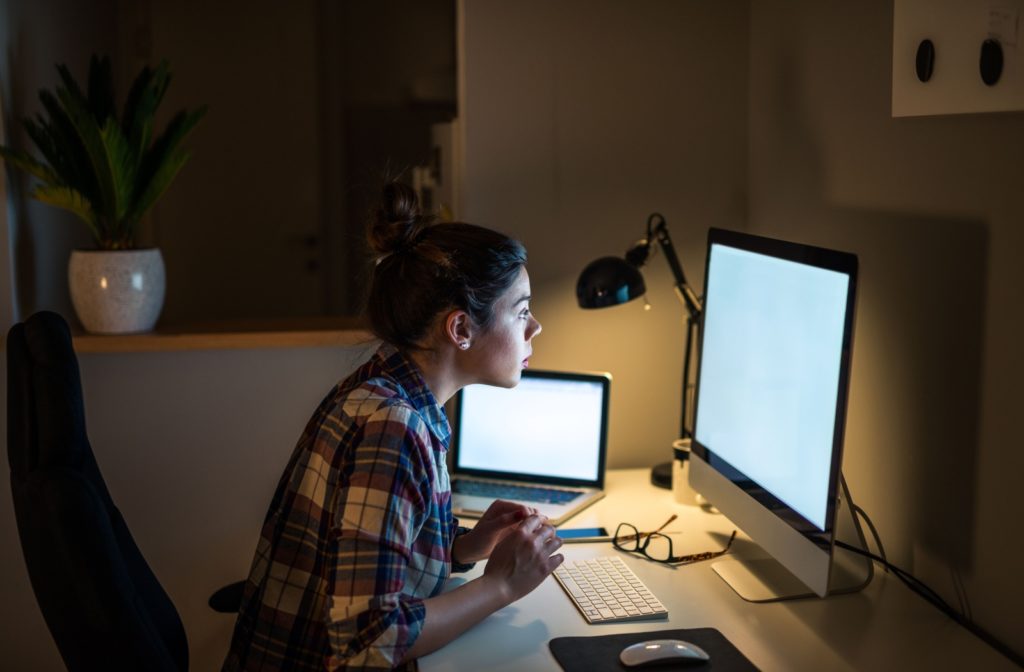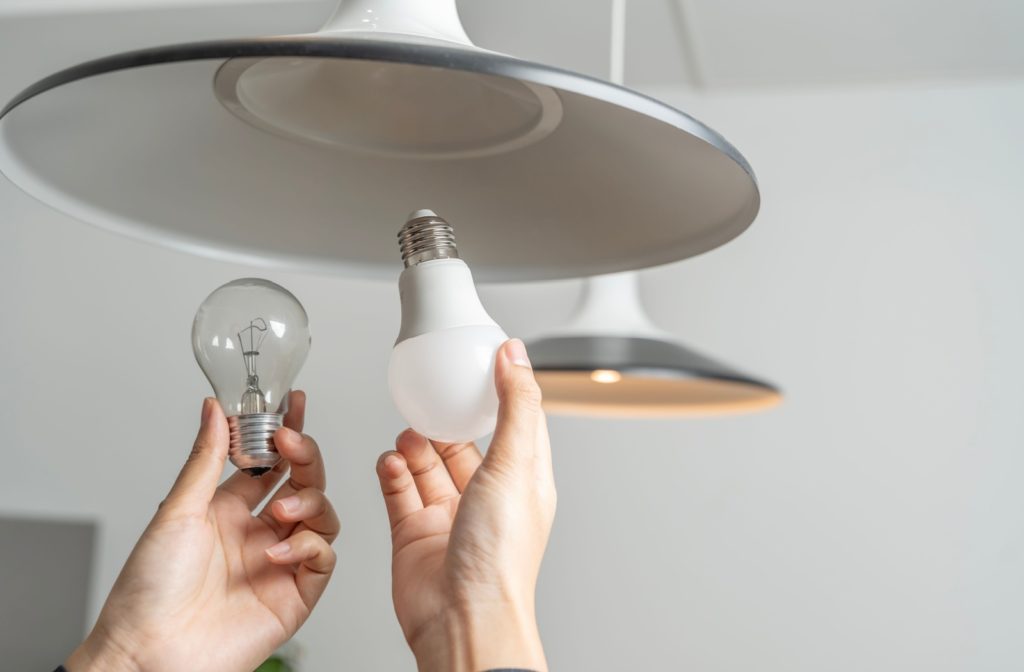LED lighting has grown increasingly popular in homes, workplaces, and even on our screens. These energy-efficient light bulbs help save electricity and reduce carbon footprints, but some people wonder if they come with hidden risks, especially to our eyes. With LED lights now lighting up our lives more than ever, it’s crucial to address this concern.
For the average person, LEDs likely won’t cause significant problems when used in moderation. Some studies suggest prolonged exposure to LED light, especially blue light, may contribute to eye strain, headaches, and even potential retinal damage. However, the research is ongoing and not all eye experts agree on the severity of the risks. However, It’s generally recommended to take breaks from screens and adjust your screen’s brightness.
What Are LED Lights?
LED stands for Light-emitting diode. Unlike traditional incandescent bulbs that burn a filament or compact fluorescent lights that use gas-filled tubes, LED lights emit light when an electric current passes through a semiconductor. This modern technology makes LEDs much more efficient and longer-lasting than older types of bulbs.
Can LED Lights Damage Your Eyes?
To address if LED lights can harm your eyes, we need to examine the type of light they emit and how it interacts with the human visual system.
Blue Light and LED Lights
LED lights, particularly those with “cool” or “daylight” color temperatures emit blue light. Blue light is a short-wavelength, high-energy light that is naturally present in sunlight but is also emitted in varying levels by artificial light sources like LED screens, smartphones, and modern LED bulbs.
Blue light has both good and bad effects:
- The Good – Blue light regulates our circadian rhythm, helping us stay alert during the day and sleep at night.
- The Bad – Prolonged exposure to blue light has been suspected of contributing to eye strain and even potentially damaging retinal cells.
This raises the question of whether long-term exposure to blue light from LEDs could result in permanent eye damage.
Studies on Eye Damage & LED Lights
Research into LEDs and eye health is ongoing; however, some studies raise valid concerns about the effects the LED lights might have on our eyes.
Phototoxicity Risk
High-intensity blue light has been linked to potential damage to the retina. According to a 2019 study by the French Agency for Food, Environmental and Occupational Health & Safety (ANSES), prolonged and repeated exposure to LED light could increase the risk of developing retinal toxicity.
Digital Eye Strain
Using screens that emit blue light (like laptops and smartphones) for extended periods has been shown to cause digital eye strain, with symptoms like dry eyes, blurred vision, and headaches. Though this strain is often temporary, it negatively affects comfort and productivity.
Sleep Disruption
Blue light can suppress melatonin, the hormone responsible for sleep regulation. Exposure to high levels of LED lighting late at night may interfere with your sleep cycle.
However, it’s very important to note that most of these risks are associated with intense or prolonged exposure to blue light rather than the everyday use of LED lamps in your home.

5 Ways to Protect Your Eyes from Potential LED Light Risks
If you’re concerned about the effects of LED lights on your eyes, here are some simple, practical steps you can take to keep your eyes safe:
1. Choose Warm-Toned LED Lights
When shopping for LED lights, opt for bulbs labeled “warm white” rather than “cool white” or “daylight.” Warm-toned LEDs emit significantly less blue light, making them gentler on your eyes, especially for evening use.
2. Take Breaks from Screens
If you spend long hours in front of screens, practice the 20-20-20 rule:
Every 20 minutes, look at an object 20 feet away for at least 20 seconds. This helps relax your eye muscles and reduces the fatigue caused by prolonged screen exposure.
3. Use Blue Light Filters
Many devices now come with built-in blue light filters, sometimes called “night mode.” You can also purchase blue light filtering screen protectors for added protection. These filters reduce the intensity of blue light your screen emits, making evening use less strenuous on your eyes.
4. Consider Anti-Reflective or Blue-Blocking Glasses
If you’re prone to eye strain, talk to your optometrist about glasses with coatings that block blue light or reduce glare. While these won’t prevent you from experiencing digital eye strain, there is some evidence they can help improve sleep after screen use.
5. Practice Good Lighting Habits
Avoid sitting in the dark while using screens, as bright LED light from devices can feel harsher when there’s no ambient lighting. Use additional light sources to even out the brightness in your surroundings.
Are LED Lights Safe in General?
Yes, LED lights are generally safe. They offer numerous benefits, including energy savings and eco-friendliness. The concerns about blue light are more applicable to the overuse of screens or sun exposure rather than typical home lighting—so there’s no need to avoid LEDs altogether.
Additionally, it’s good to consult with an eye care professional if you’re experiencing prolonged symptoms of eye strain or discomfort. They can provide personalized advice based on your vision needs and overall health.
Take Steps for Better Eye Health Today
Digital eye strain can lead to headaches, dry eyes, and fatigue in the muscles around the eyes. If you find yourself frequently experiencing eye strain when using screens, it might be time to consult an optometrist.
At Total Vision Carlsbad Plaza, we offer eye exams and digital eye strain solutions for the whole family. To get started on your eye health journey, you can book an appointment with us today.



